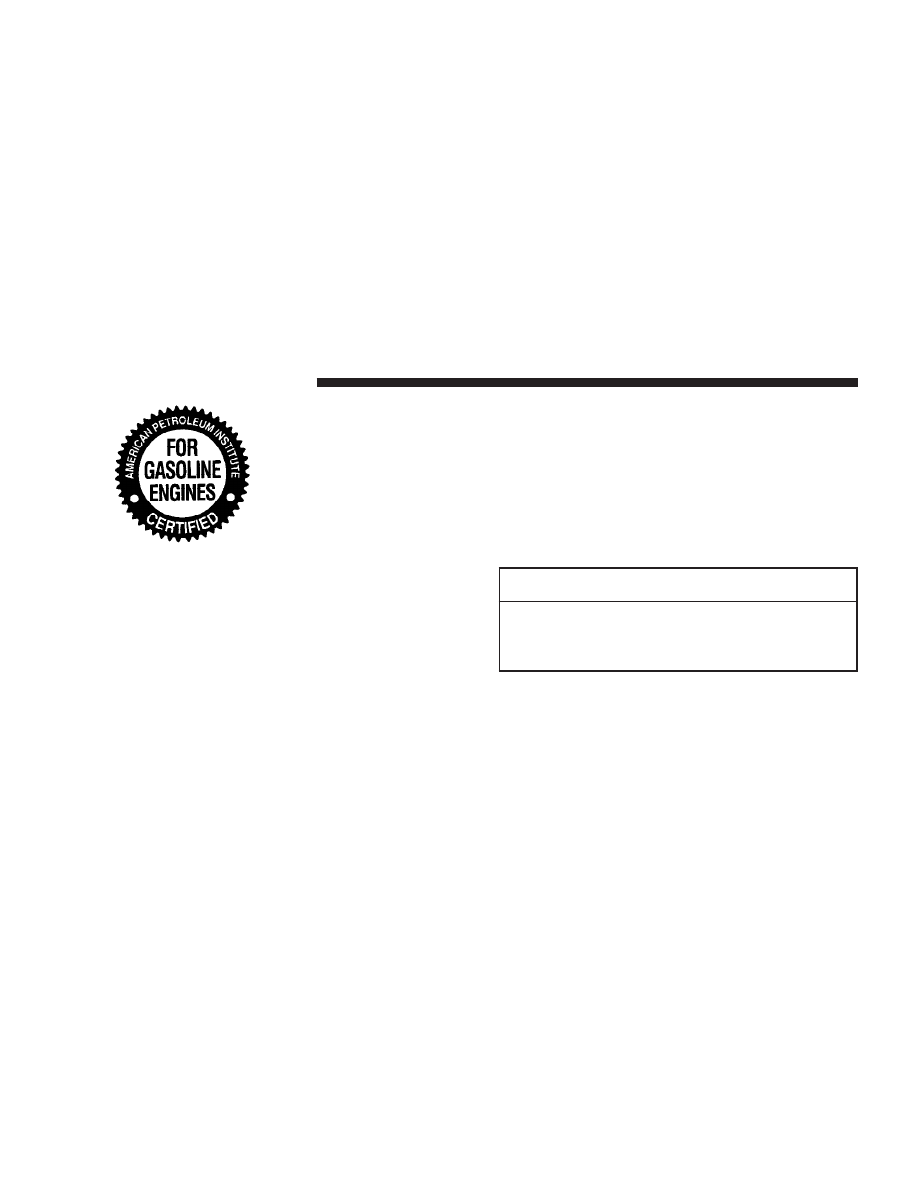Dodge Stratus Sedan (2005 year). Instruction - part 12

This symbol means that the oil has
been certified by the American
Petroleum Institute (API). We
only recommend API Certified en-
gine oils that meet the require-
ments of DaimlerChrysler’s Mate-
rial Standard MS-9214. Use Mopar
or an equivalent oil meeting the
specification MS-9214.
The manufacturer strongly recommends against the ad-
dition of any additives (other than leak detection dyes) to
engine oil. Engine oil is an engineered product and it’s
performance may be impaired by supplemental addi-
tives.
• Engine Oil Selection for Operating on E-85
If you operate the vehicle on E-85 fuel, either full or
part-time, use only Mopar Flexible Fuel 5W-30 engine
oil (P/N 4318086) or an equivalent that meets the
Manufacturer’s Standard MS-9214. Equivalent com-
mercial Flexible Fuel engine oils may be labeled as
Flexible Fuel (FFV) or Alternate Fuel (AFV). These
engine oils may be satisfactory if they meet the Manu-
facturer’s Standard.
The 5W-30 engine oil installed at the factory meets the
manufacturer’s requirements for Flexible Fuel engine oil.
SAE 5W-30 engine oil is preferred for use in Flexible Fuel
engines.
CAUTION!
If Flexible Fuel engine oil is not used when using
E-85, engine wear may be increased significantly.
This may void your warranty.
• Engine Oil Selection for Operating on Gasoline
If you operate the vehicle on regular unleaded gasoline
ONLY, use Mopar oil or an equivalent that meets certified
API (American Petroleum Institute) Quality.
182
STARTING AND OPERATING